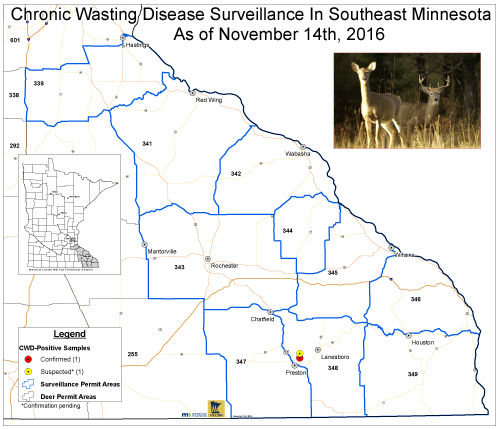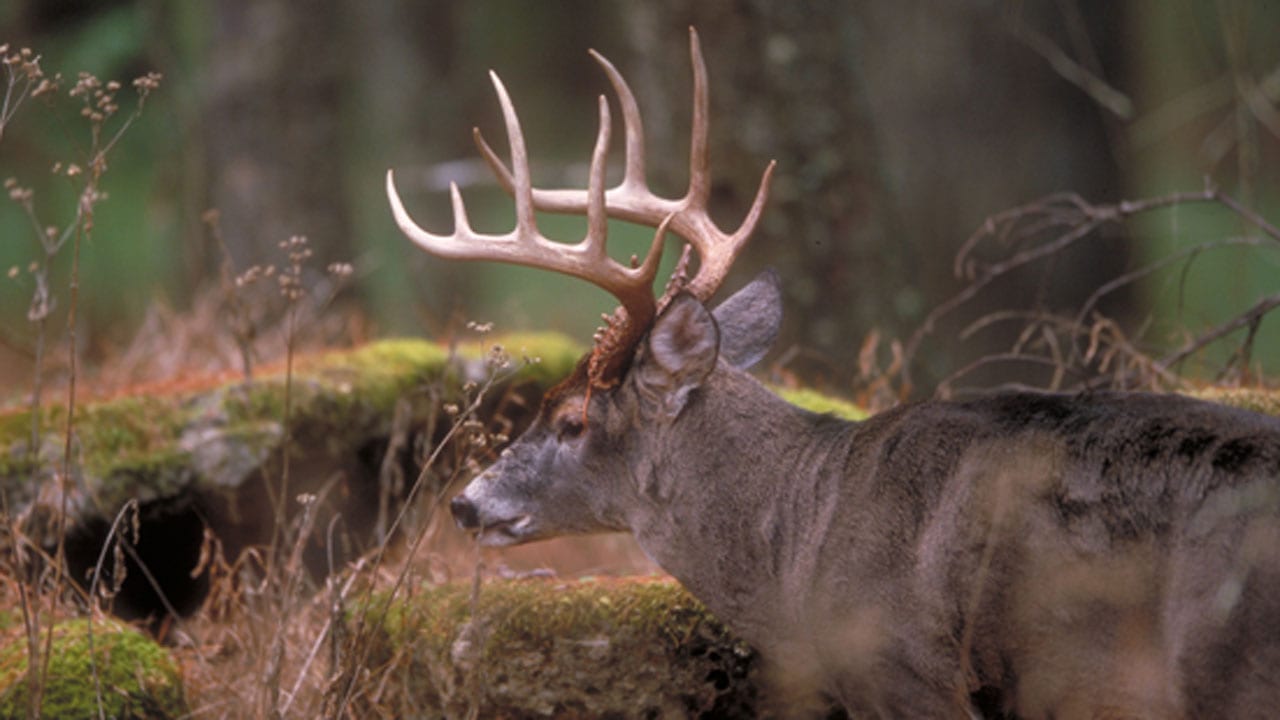According to a recent report from the Minnesota DNR, several deer have been found to have been infected with CWD. Its a report no hunter ever wants to hear, but a harsh reality of what deer can potentially face throughout the year.

Infected animals were noted on an area map.
The report says that CWD (Chronic Wasting Disease) has infected two male deer harvested near Lanesboro in Fillmore County. The two deer were harvested within 1 mile of each other in deer permit area 348 during southeastern Minnesota’s first firearms deer season.
These are the only deer that tested positive from 2,493 samples collected Nov. 5-13. Results are still pending from approximately 373 additional test samples collected during the opening 3 days of second firearms season, Nov. 19-21.
The DNR has already begun to implement their CWD Response Plan and will be working with hunters, landowners, and organizations to develop additional disease management strategies to ensure a bright future for deer and deer hunting.

CWD is a contagious neurological disease affecting deer, elk and moose. It causes a characteristic spongy degeneration of the brains of infected animals resulting in emaciation, abnormal behavior, loss of bodily functions and death.
CWD belongs to a group of diseases known as transmissible spongiform encephalopathies (TSEs). Within this family of diseases, there are several other variants that affect domestic animals:
- Scrapie, which has been identified in domestic sheep and goats for more than 200 years;
- Bovine spongiform encephalopathy (BSE) in cattle (also known as “mad cow disease”); and
- Transmissible mink encephalopathy in farmed mink.





